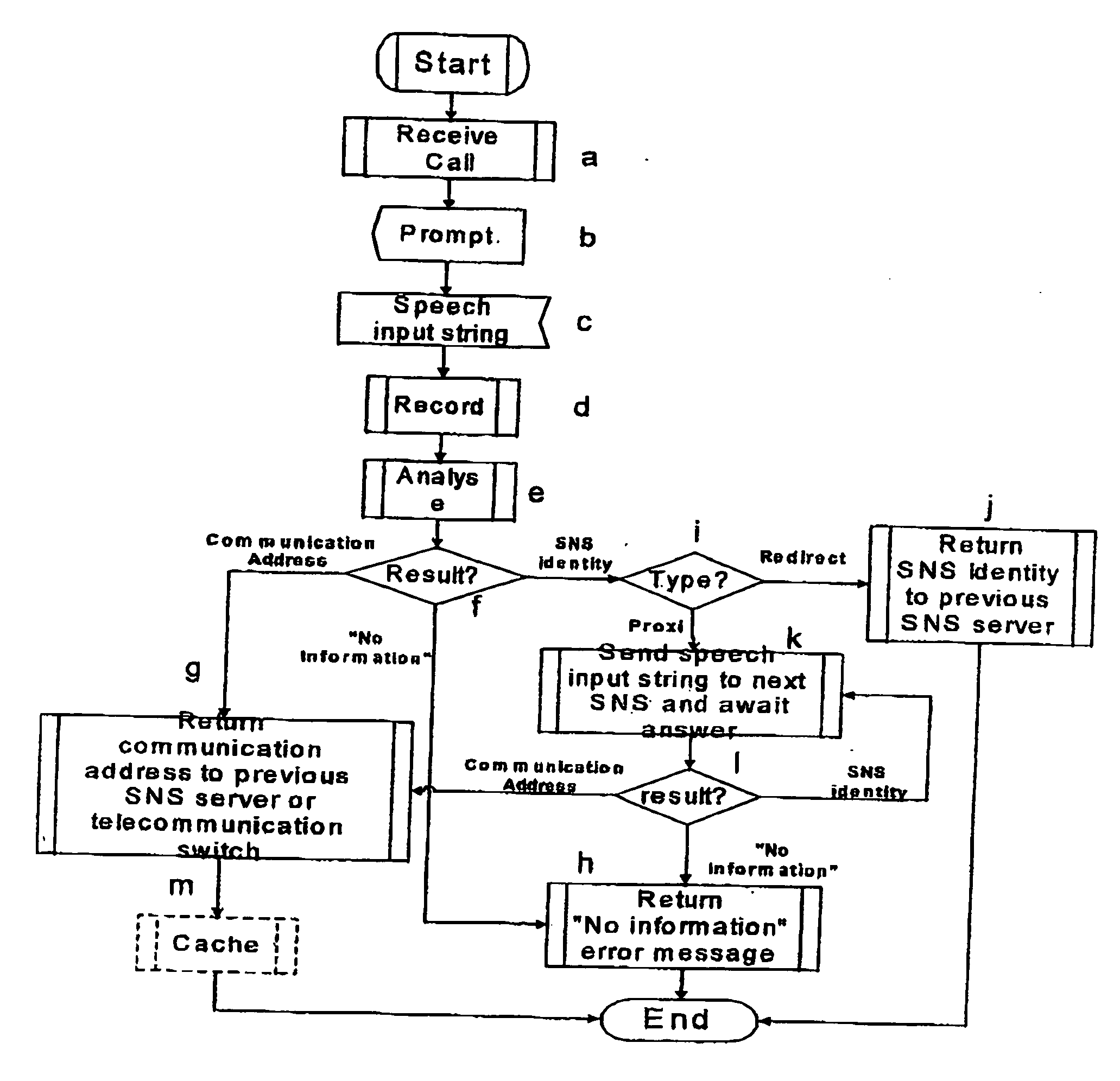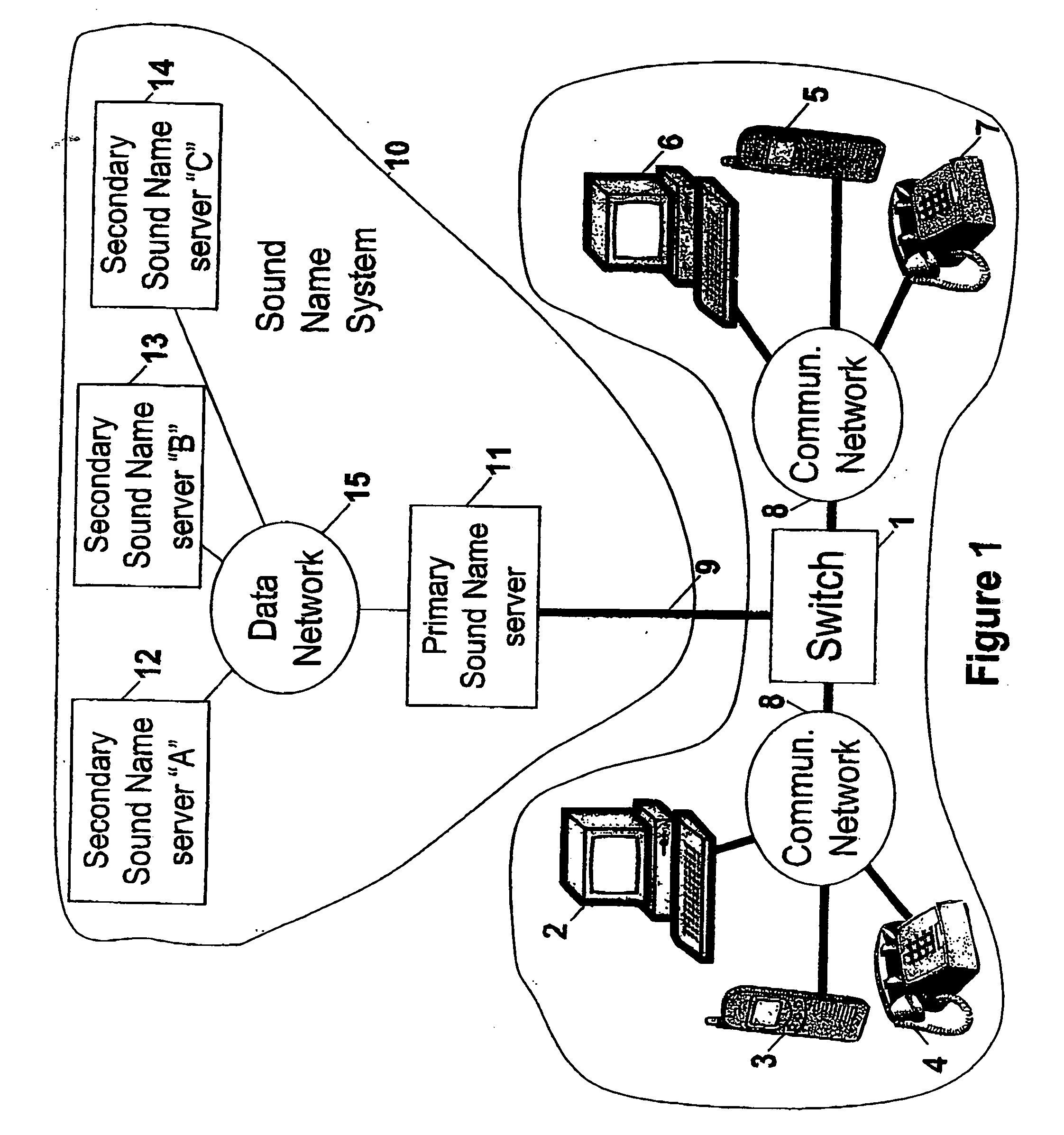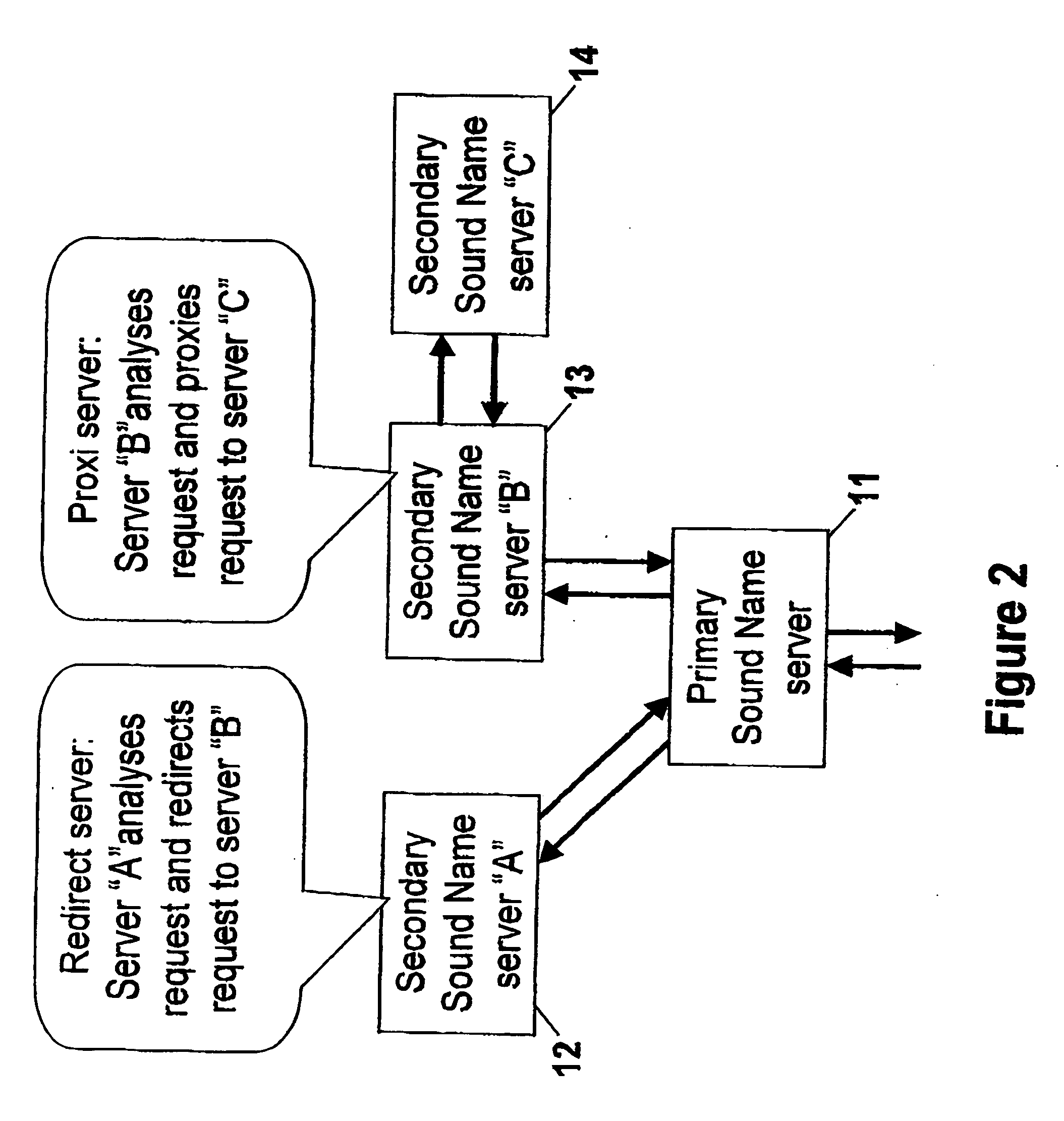System and method for hierarchical voice actived dialling and service selection
- Summary
- Abstract
- Description
- Claims
- Application Information
AI Technical Summary
Benefits of technology
Problems solved by technology
Method used
Image
Examples
Embodiment Construction
[0048] The present invention provides a hierarchically structured automatic speech recognition method and system. For the purpose of the teaching of the invention a preferred embodiment of the system arranged as a voice dialling system will be described.
[0049] As shown in FIG. 1 a telecommunication switch (1) provides communication between several telecommunication terminals (2, 3, 4, 5, 6 and 7). These telecommunication terminals may be fixed or mobile telephones or personal computers. Such personal computers should be provided with a microphone and a loudspeaker in order to allow it to function as a telephone. The telecommunication terminals (2-7) and the telecommunication switch (1) are connected through a communication network (8). This communication network (8) can be either a fixed network, such as e.g. PSTN or ISDN, a mobile network, such as e.g. a GSM or DECT network, or a local network such as e.g. the LAN within a company.
[0050] Connected to the telecommunication switch ...
PUM
 Login to View More
Login to View More Abstract
Description
Claims
Application Information
 Login to View More
Login to View More - R&D
- Intellectual Property
- Life Sciences
- Materials
- Tech Scout
- Unparalleled Data Quality
- Higher Quality Content
- 60% Fewer Hallucinations
Browse by: Latest US Patents, China's latest patents, Technical Efficacy Thesaurus, Application Domain, Technology Topic, Popular Technical Reports.
© 2025 PatSnap. All rights reserved.Legal|Privacy policy|Modern Slavery Act Transparency Statement|Sitemap|About US| Contact US: help@patsnap.com



